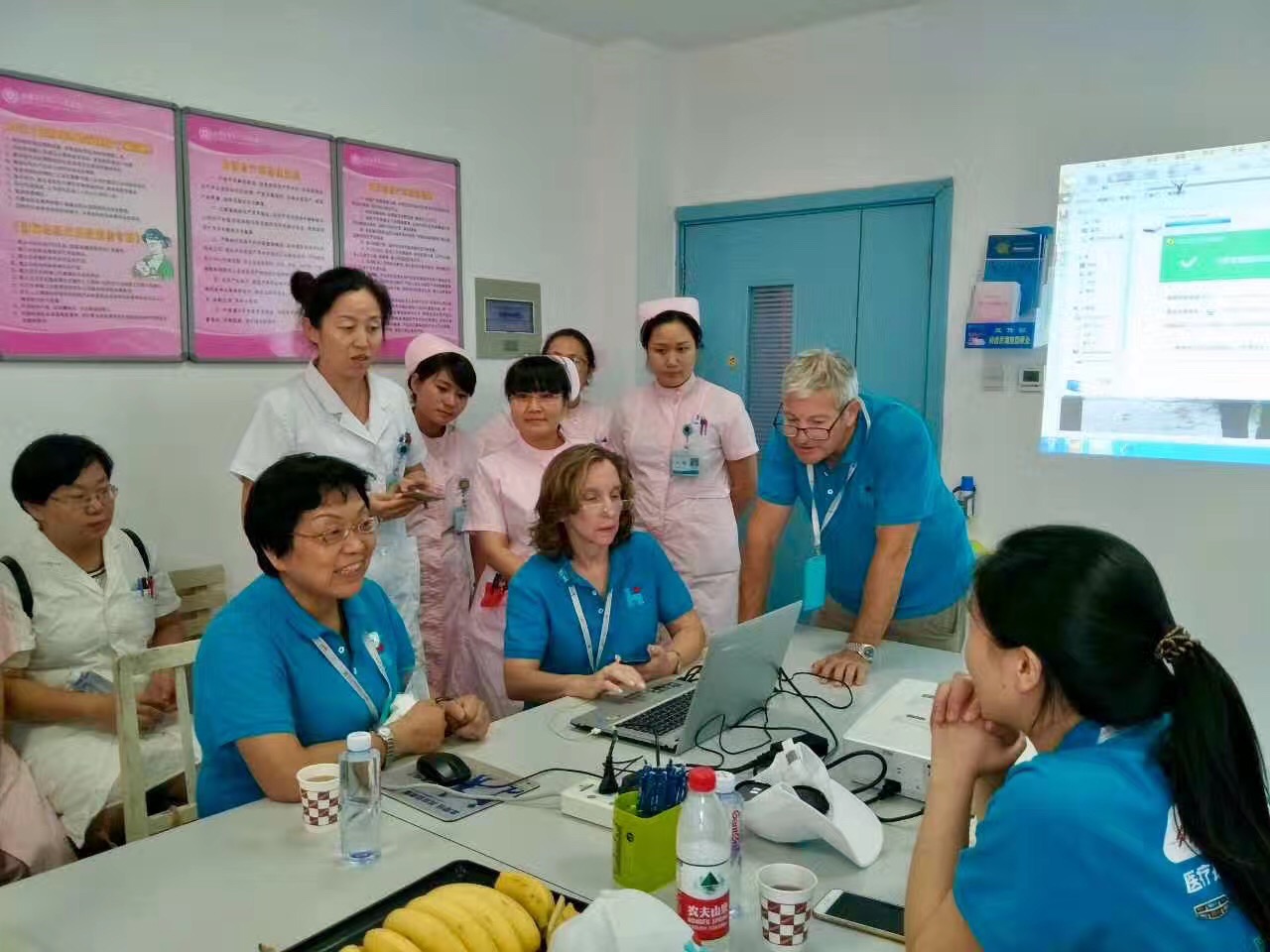A new model to promote the prevention and treatment of cervical cancer in Chinese women
Having been involved in healthcare projects for almost forty years I have always known the importance of screening programs for the prevention, early detection and early intervention in preventing unnecessary deaths from cancer. This summer I had an experience that allowed me to witness first hand the tragedy of the absence of such screening programs.
From the time I was old enough to be a potentially sexually active adult, I have had yearly visits to my gynecologist to ensure my ongoing good health. At those visits I would be given a pelvic exam, pap smear, and breast exam. I was surprised when I got to China to find out that my contemporaries did not go through the same yearly ritual of tests, which are essential for the early detection and prevention of Cervical and other Cancer.
Thus it was not surprising for me to find out that in China Cervical Cancer today is 1.7 times more prevalent than in the U.S, and China accounts for 28% of the cervical cancer cases in the world. It is estimated that there are between 60,000 and 100,000 women diagnosed with new cases of cervical cancer each year in China, and there were over 30,000 cervical cancer related deaths. The sad thing is that the tragedies of these cancers and deaths may have been prevented with an extensive screening and early intervention program.
Human Papilloma Virus (HPV) is the virus that causes virtually all cases of cervical cancer and most cases of other cancers such as oropharyngeal, vaginal, anal, and penile cancer.
HPV is easily transmitted by any skin to skin sexual contact and it is estimated that most sexually active people will contract HPV some time in their life. Of course, 90% of HPV infections will resolve within 2 years as a result of the body’s immune defenses. However, the 10% of people who remain persistently HPV positive are at risk for one of the above types of cancer.
Screening for HPV, which is easily done in women, allows women who test positive for the HPV virus to evaluated and treated for precancerous changes before they develop to cancer. So we decided to test out a model of screening + immediate treatment which hopefully could be easily reproduced.
This past summer, as we have for the past six years, the team from United Family joined the Hanhong foundation medical mission. This is the second time I joined the team personally. Last year we travelled through Gansu and along with doctors from over 10 other top tier hospitals joined in free consultations and interventions to the local population who don’t normally have access to that level of medical expertise.
This year the Hanhong Foundation mission went to Ningxia, and once again United Family team of 24 medical professionals joined the 80+ (?) other doctors, doing free consultations in five cities and 9 counties, over a 14-day period. All together 11,644 patients were seen and helped with diagnosis, treatment plans, medication, and in some cases surgeries and other interventions.
On the Ningxia mission, United Family team had a special goal. We piloted a screening and treatment model for Cervical and Breast Cancer. The United Family Foundation has a special mobile clinic that we outfitted with the equipment necessary to screen and treat women for cervical cancer as well as screen for breast cancer Breast Cancer screening was done for high-risk women with a special Automatic Breast Ultrasound system.
We drove the mobile clinic 4000 Kilometers from Beijing to Ningxia. At each stop in the counties throughout Ningxia, we screened between 100 and 200 women/day. In order to screen the largest number of women in the shortest amount of time we chose a “self sampling method”. We were able to teach 10 women at a time about the importance of HPV screening and how to take their own sample, by swabbing the inside of their vagina with a special swab and returning it in the test tube we provided. In each location we set up our mobile laboratory which could analyze the presence of HPV in each sample within 3 hours. Those who tested positive were then given another examination during which the doctor could visualize any potential changes in the cervix as a result of the HPV. If there were changes we were able to treat them on the spot with either cryotherapy (freezing of the effected area), or through another procedure called LEEP which could painlessly excise the diseased tissue.
We were pleased to be able to tell the women who were treated for early stage disease that they would likely not develop Cervical Cancer due to the early treatment we provided. This treatment was quick and painless. For them and for the HPV positive women who had not yet developed any disease, we were able to tell them that they could prevent the development of cervical cancer by yearly follow up checks. We also got the opportunity to educate all of the women who were screened about the importance of yearly HPV screening.
This was the good news. Less encouraging were the women we met who were already victims of late stage cervical cancer. Cervical Cancer is hard and expensive to treat. It is also painful and is often fatal if not discovered and treated at an early stage.
According to the HPV information center (Wang 2015) only 20.8% of women over the age of 18 in China have ever been screened for HPV. Although there are some excellent free screening programs in China, these screening programs are often not paired with or immediately follow up with treatment. Some women do get cancer screening, HPV testing and/or Pap smears in their yearly check up- sometimes provided for free by their work unit. Most Chinese check up centers do not do treatment and intervention, and women are often left on their own to figure out the next step. We hope that our model of large scale HPV screening combined with on the spot treatment can be referenced in future screening programs in China.
This is why we are proud of our approach at United Family Healthcare, where a personal doctor is in charge of helping our patients to chose the testing and screening most appropriate for them in their yearly check up and if early signs of potential disease are found, the doctor will help the patient to plan the next stage of treatment in order to prevent the disease from further developing. Other kinds of screening which can be provided include Bone Density screening to detect and prevent Osteoporosis, PSA screening for the early detection of prostate cancer and colon cancer screening- to name a few.
Some people wonder why it is still necessary to do HPV screening if the HPV vaccine has been approved in China. In fact there is an HPV vaccine that has been approved in China which is effective against 2 types of HPV (types 16 and 18) which account for about 8% of the HPV found in China, but almost 80% of the HPV which become cervical cancer. However this vaccine is not yet widely available.
There are over 40 types of HPV which are spread through sexual contact. Other vaccines which are approved for use in the US and other countries and not yet available here, can protect against up to 9 types of HPV. Until these vaccines are widely used in China, HPV infections will continue to be prevalent and continue to cause cervical cancer if widescale screening and treatment for early detection is not available.
As individuals, if we are lucky enough to have access to relevant medical resources, we can take responsibility to make sure we get the types of screening most appropriate to our age and gender and follow up with the best interventions to keep ourselves healthy.
http://www.hpvcentre.net/statistics/reports/CHN_FS.pdf





